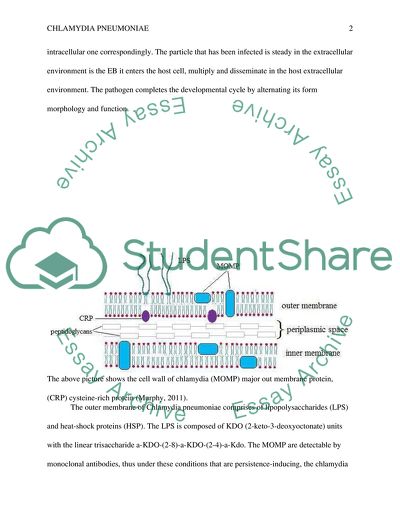Cite this document
(Chlamydia Pneumoniae Pathogen Term Paper Example | Topics and Well Written Essays - 1750 words, n.d.)
Chlamydia Pneumoniae Pathogen Term Paper Example | Topics and Well Written Essays - 1750 words. https://studentshare.org/biology/1868339-hypothetical-pathogen-with-an-ability-to-evade-at-least-three-component-of-the-immune-system-and-a-hypothetical-drug-that-will-restore-the-immune-response
Chlamydia Pneumoniae Pathogen Term Paper Example | Topics and Well Written Essays - 1750 words. https://studentshare.org/biology/1868339-hypothetical-pathogen-with-an-ability-to-evade-at-least-three-component-of-the-immune-system-and-a-hypothetical-drug-that-will-restore-the-immune-response
(Chlamydia Pneumoniae Pathogen Term Paper Example | Topics and Well Written Essays - 1750 Words)
Chlamydia Pneumoniae Pathogen Term Paper Example | Topics and Well Written Essays - 1750 Words. https://studentshare.org/biology/1868339-hypothetical-pathogen-with-an-ability-to-evade-at-least-three-component-of-the-immune-system-and-a-hypothetical-drug-that-will-restore-the-immune-response.
Chlamydia Pneumoniae Pathogen Term Paper Example | Topics and Well Written Essays - 1750 Words. https://studentshare.org/biology/1868339-hypothetical-pathogen-with-an-ability-to-evade-at-least-three-component-of-the-immune-system-and-a-hypothetical-drug-that-will-restore-the-immune-response.
“Chlamydia Pneumoniae Pathogen Term Paper Example | Topics and Well Written Essays - 1750 Words”. https://studentshare.org/biology/1868339-hypothetical-pathogen-with-an-ability-to-evade-at-least-three-component-of-the-immune-system-and-a-hypothetical-drug-that-will-restore-the-immune-response.


